Many thanks to all of you who participated in our OpenNebula Architecture Survey 2023! 🤓 As always, we count on your participation as a critical resource, one that allows us to maintain our focus on you, the OpenNebula Comunity, and what you most seek out of OpenNebula software, both in the present and in the future. It must be noted that this survey is not a market survey, and does not represent all of the OpenNebula deployments worldwide.
This is the sixth architectural survey of OpenNebula since 2012, and we collected results during the month of February 2023. The data provided helps to highlight how OpenNebula is being used in the user community, as well as to provide indicators on their evolving needs.
Executive Summary
Here are some interesting findings that have come to light from user responses and feature requests in this year’s survey:
- Last year OpenNebula introduced full support for AlmaLinux, which seems to have encouraged an increase in its usage. However, we have also seen a marked increase in usage of Rocky Linux, which may be worth a subsequent introduction of support in the near future.
- The release of OpenNebula 6.6 “Electra” included the introduction of a new backup system, and there has been pointed interest in its features and its evolution. While the timing of the survey preceded the two Maintenance Releases (EE 6.6.1 and 6.6.2) which have brought with them enhancements and improvements to the backup capabilities, it is clear that continued development and fine-tuning is widely desired.
- Utilization of Microsoft Azure is prominent and merits the development of a driver for OpenNebula OneProvision to be able to deploy edge clusters in this public cloud provider.
- A Storage Live Migration capability appears to be on the “wishlist” of many OpenNebula users.
- Kubernetes usage and its integration with OpenNebula continue to grow, and Improvements and further enhancements with this integration should be an important priority.
- The long-awaited upgrade to Sunstone UI (FireEdge Sunstone) has garnered adoption but warrants continued improvements and attention to reach feature parity with its predecessor.
- A GUI for storage management to allow for underlying storage system fine-tuning seems to be widely called for.
Thank you again for participating in our survey! Below you can review the detailed results ⬇️
Type of Industry
The Industry demographics of OpenNebula usage have remained fairly steady. While usage by Government, Non-profit, and Research and Academic groups continue to find value in OpenNebula, usage across the “commercial industries” continues to grow, bringing a combined usage surpassing 85%.

Organization Size
There doesn’t appear to be any notable change in distribution across company size. Usage by organizations of all sizes continues to be pretty well distributed.
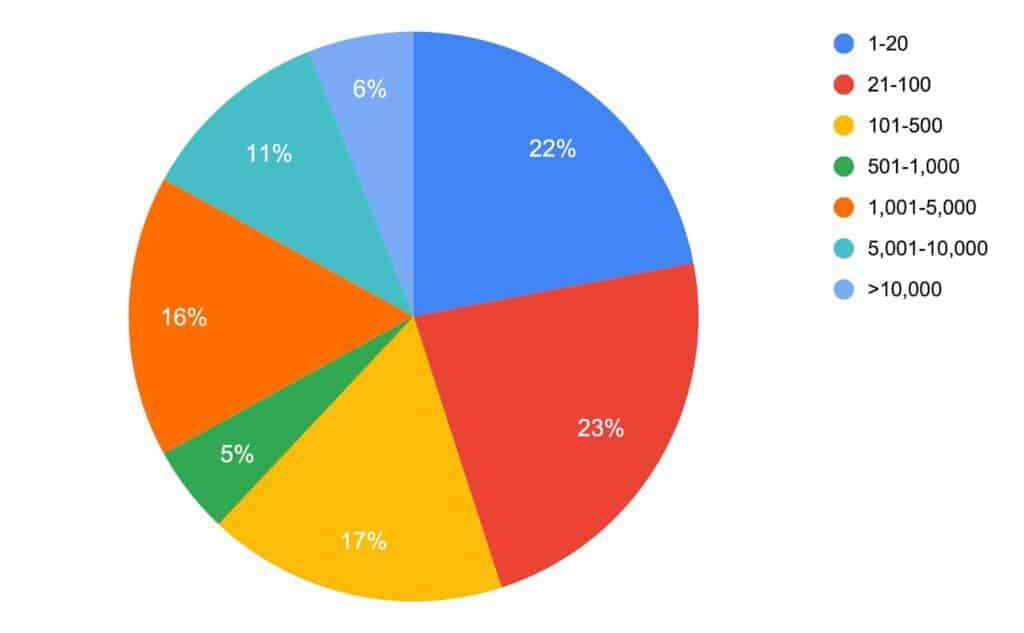
OpenNebula as a “Replacement Solution”
This is a new question that we introduced in this year’s survey, and the first finding is that over 50% of users have chosen OpenNebula as a replacement for an existing enterprise cloud solution. And of those replacements (excluding those responding “NONE”), 41% of them were to replace VMware.
Interaction with Other Cloud Providers (allows for multiple selections)
OpenNebula users continue to find value in utilizing public cloud resource providers, and while AWS remains one of the more popular providers, Microsoft Azure has been noted as the most popular provider in this survey. This is a finding that we will take into very close consideration, as we look to expand our catalog of public cloud drivers.
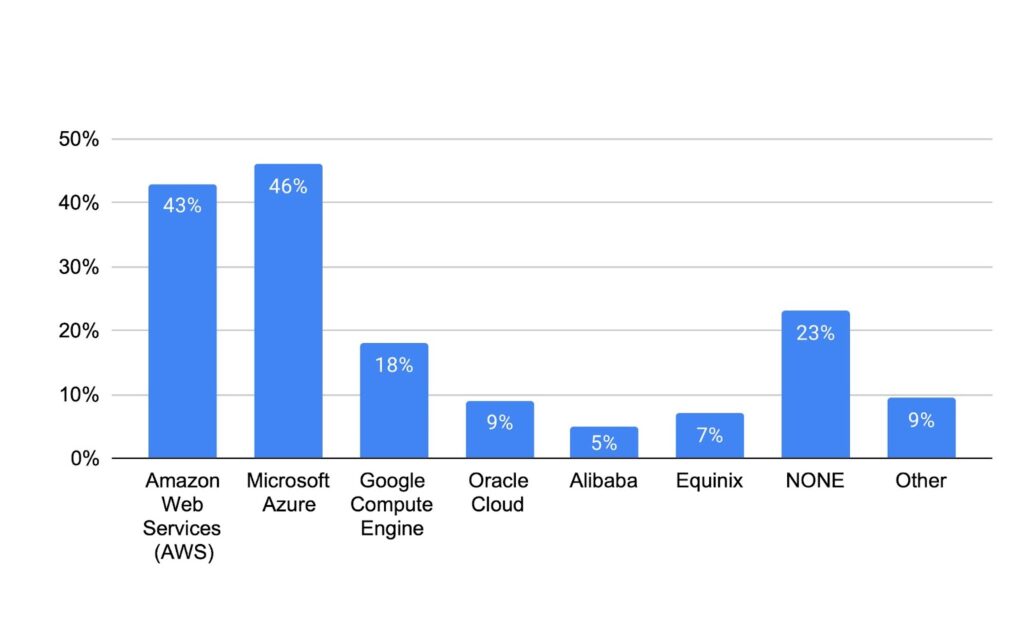
Number of Zones (OpenNebula instances)
The number of OpenNebula zones has remained relatively stable, not demonstrating any significant change in distribution.
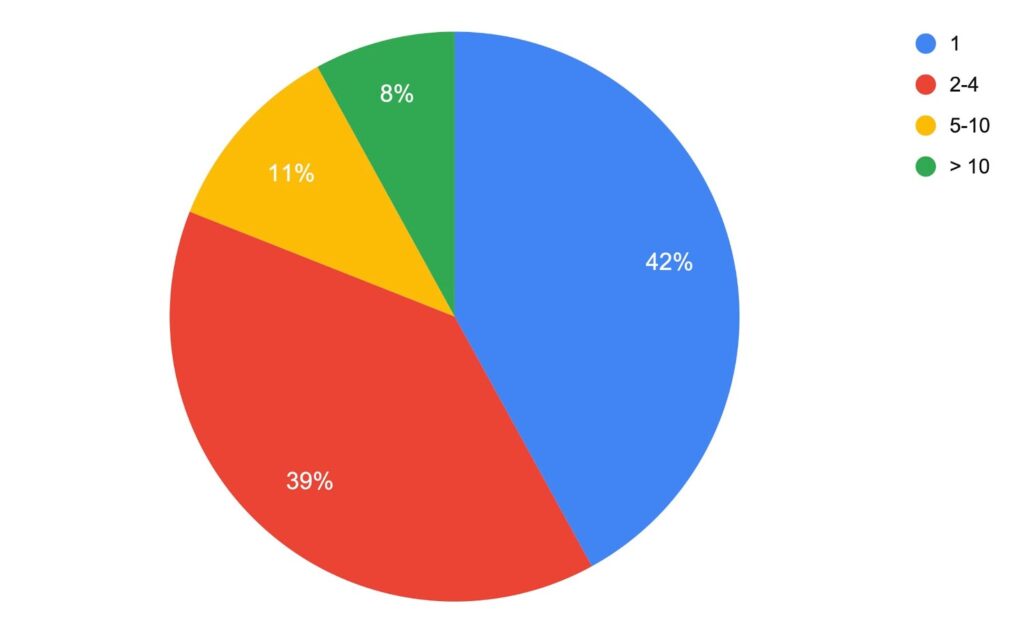
Number of Nodes
Similarly, there are no notable changes in the general cloud size distribution based on node count.
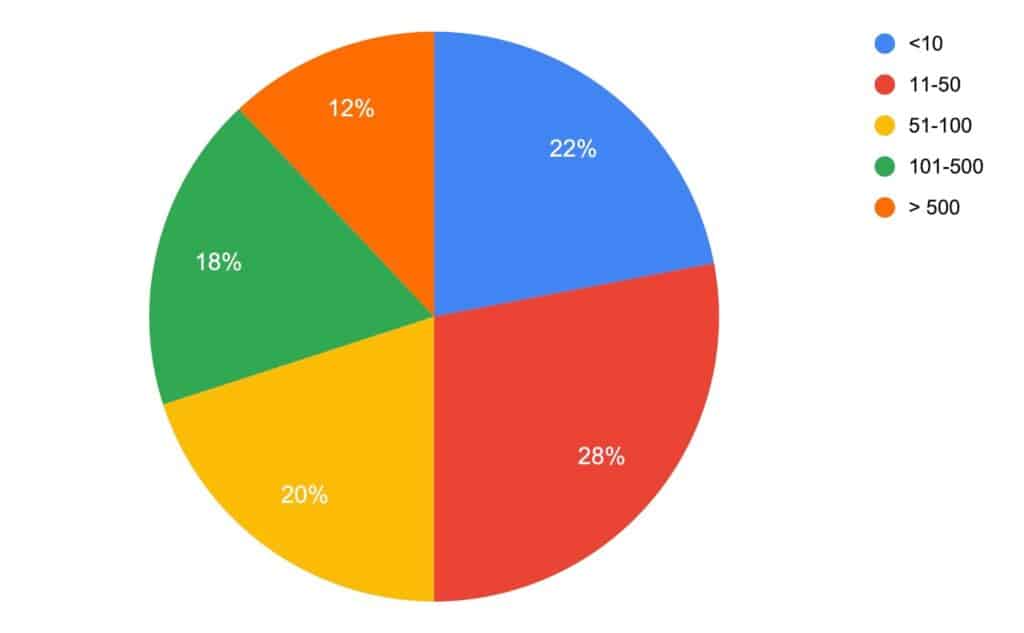
Intention to deploy an Edge Cloud
This is another new question to the survey, and all figures point, with almost 30%, that this is an emerging use case that will be evolving in the near future.
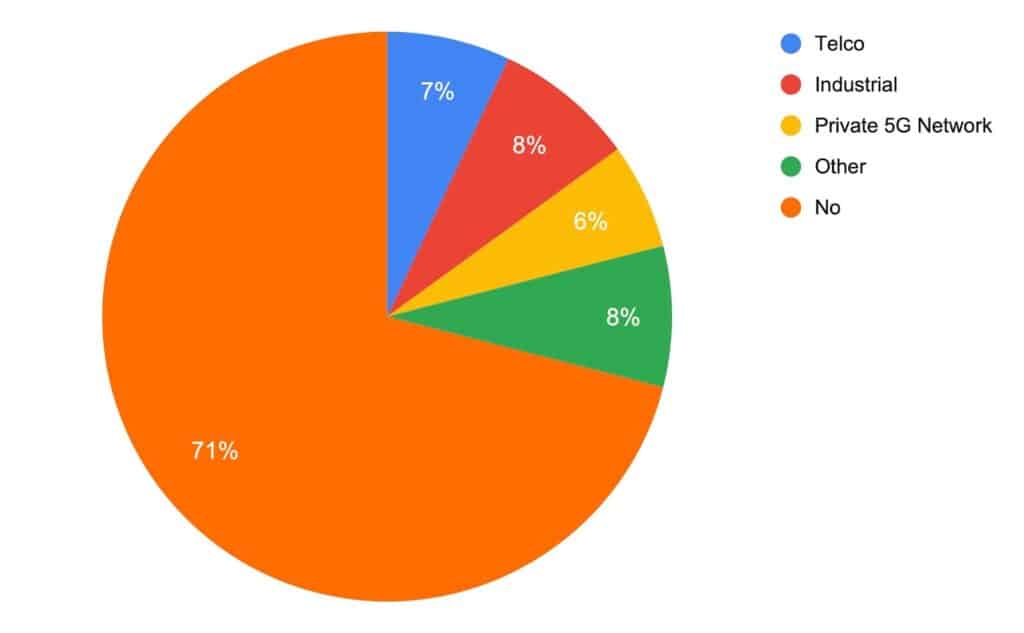
Operating Systems (allows for multiple selections)
The first clear indicator here is that there is a sharp shift away from CentOS, which given the Red Hat communication of its pending End of Life, this makes a lot of sense. Consequently, we see an increased usage of AlmaLinux, as well as of Rocky Linux. OpenNebula has recently introduced enterprise support for AlmaLinux, and it looks like Rocky Linux is making its own case for the same. Additionally, Debian-based Operating Systems (Debian and Ubuntu, totaling 86%) are a more popular choice among our user base compared to rpm-based Linux distributions (RHEL, AlmaLinux, and Rocky Linux totaling 39%).
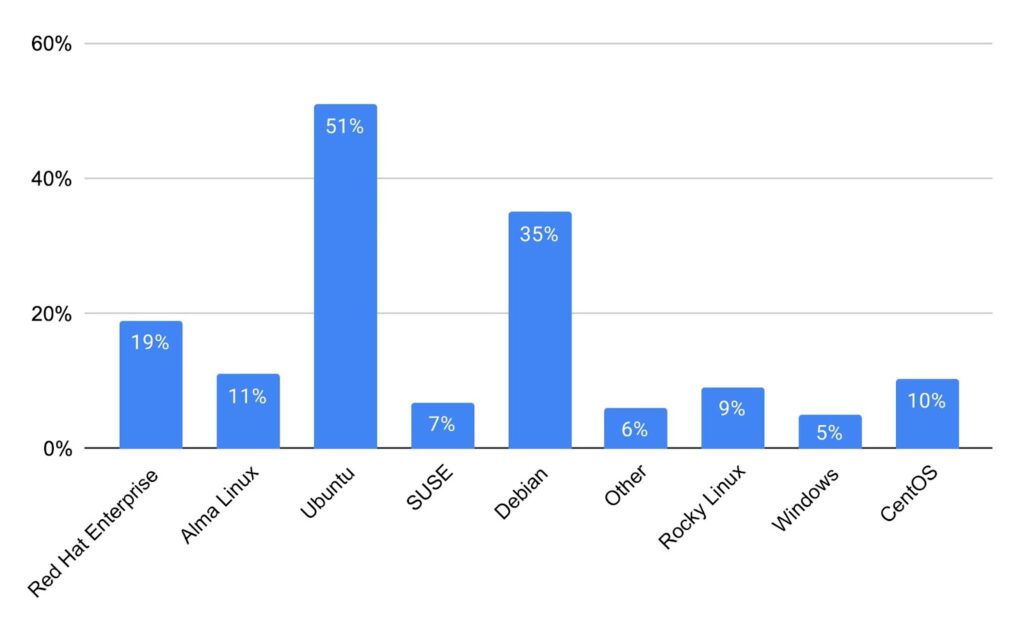
Hypervisors (allows for multiple selections)
We see a continued shift of OpenNebula users toward KVM usage. VMware usage has dipped slightly since the last survey. LXD and LXC remain marginal options for users.
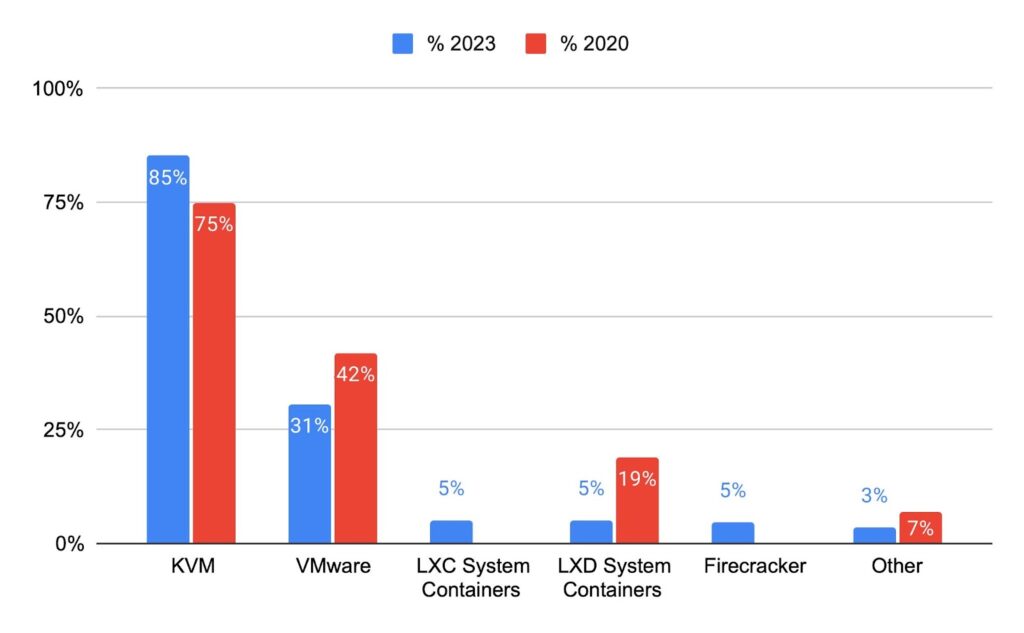
Storage (allows for multiple selections)
Storage solution preference has remained fairly steady compared to our last survey. Shared Datastores continue to reign supreme, but Ceph storage also maintains popularity.
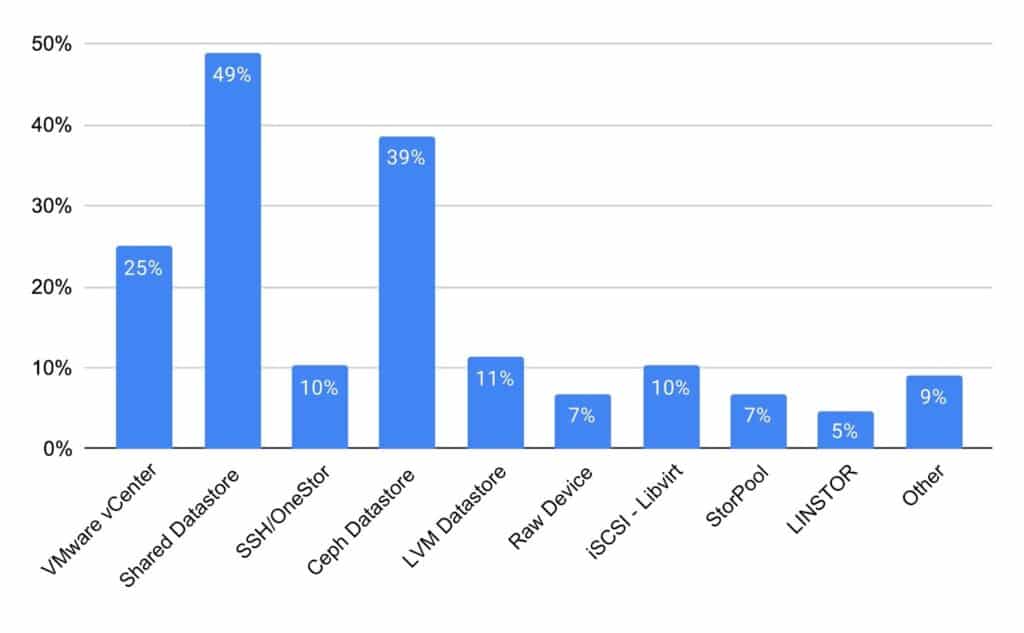
Networking Configurations (allows for multiple selections)
Network configurations of OpenNebula users remain generally steady, as well. Bridged networks, VLANs remain the most popular. And VXLAN and Open vSwitch follow up closely.
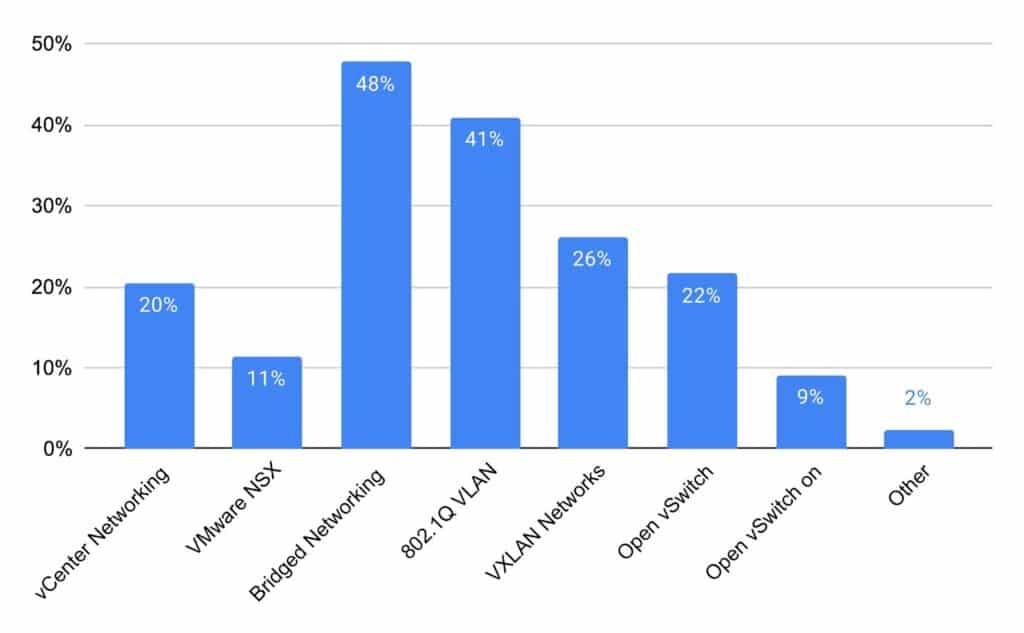
Databases
The figures are quite clear and straightforward – MariaDB is the database of choice, but MySQL has a solid user base, as well.
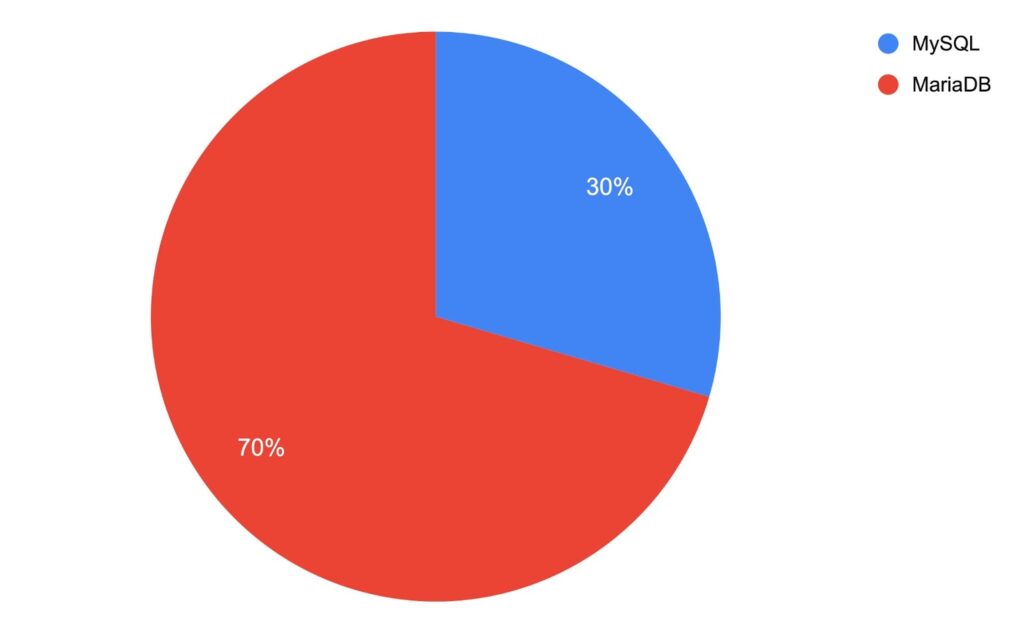
Monitoring
In terms of monitoring, with the recent integration of Prometheus in the latest Enterprise Edition (v.6.6), it is good to see a solid block of users using that product. However, there is solid usage of Zabbix, in addition to the native monitoring capabilities provided by OpenNebula.
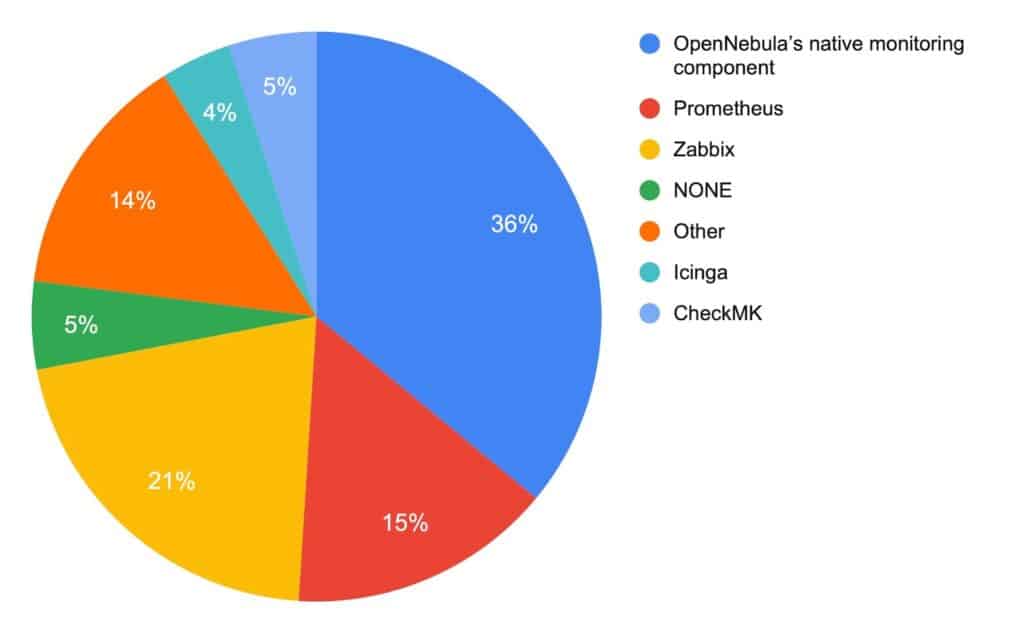
Configuration Tools
Ansible clearly remains the configuration management tool of choice.
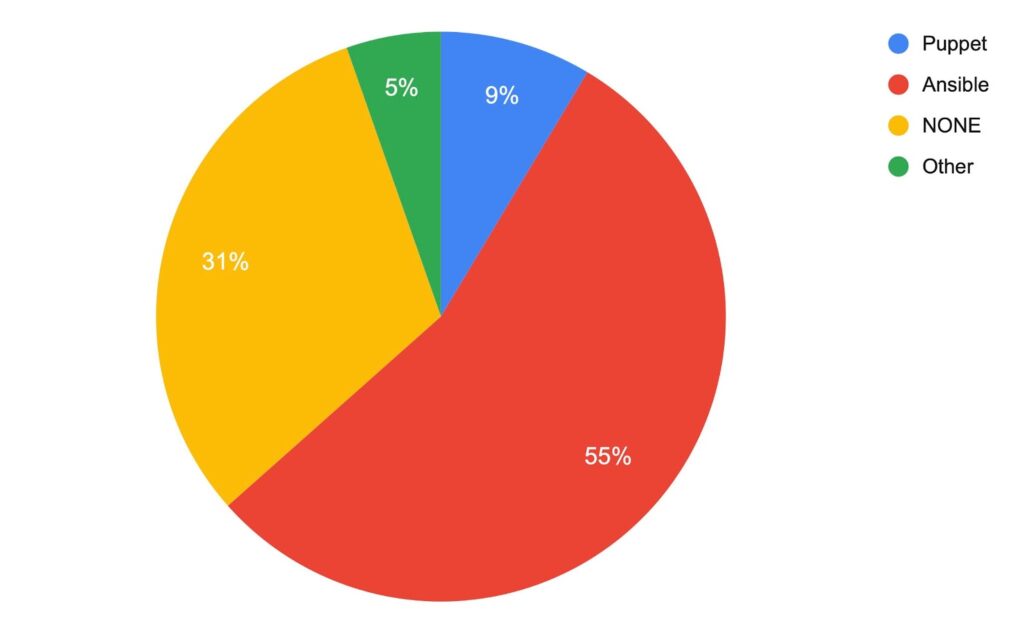
Provisioning Tools
For those that are using supplemental tools for Infrastructure Provisioning, Terraform is clearly the preferred choice.
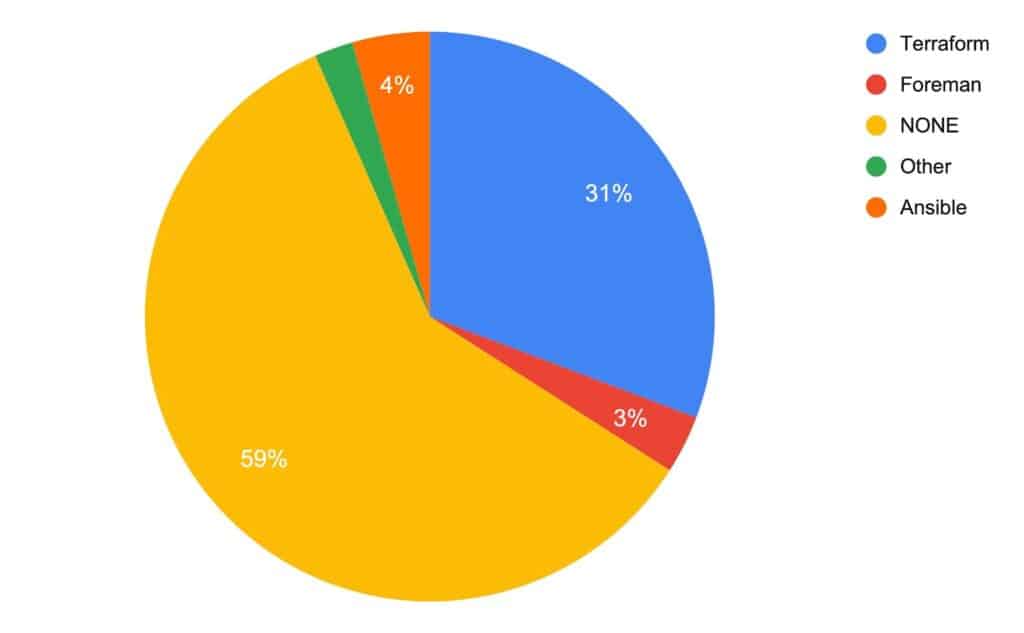
Containers (allows for multiple selections)
One thing that this survey has helped confirm is that Kubernetes remains a key tool for organizations. Here we see that Kubernetes – in its “various flavors” – has a solid user base. This is followed pretty closely by users of SUSE Rancher.
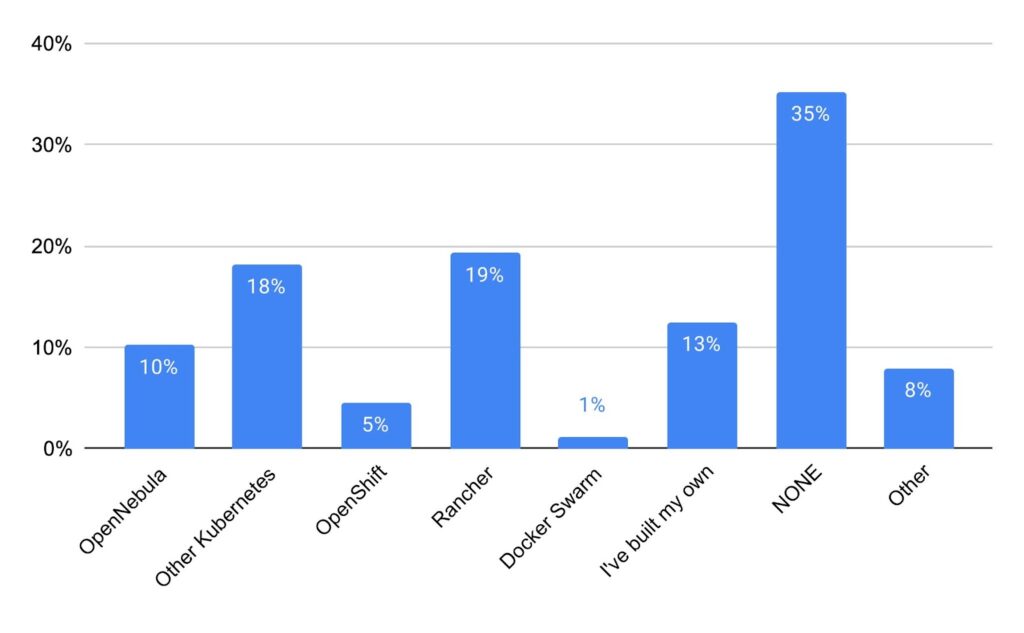
OpenNebula Features (allows for multiple selections)
One of the interesting findings from this question is the confirmation that there is significant interest in the features that we have recently included in the Enterprise Edition of the software. There is a high interest in the enterprise monitoring and dashboarding features provided by Prometheus and Grafana. Similarly, there is significant interest in the recently integrated Restic Backup system.
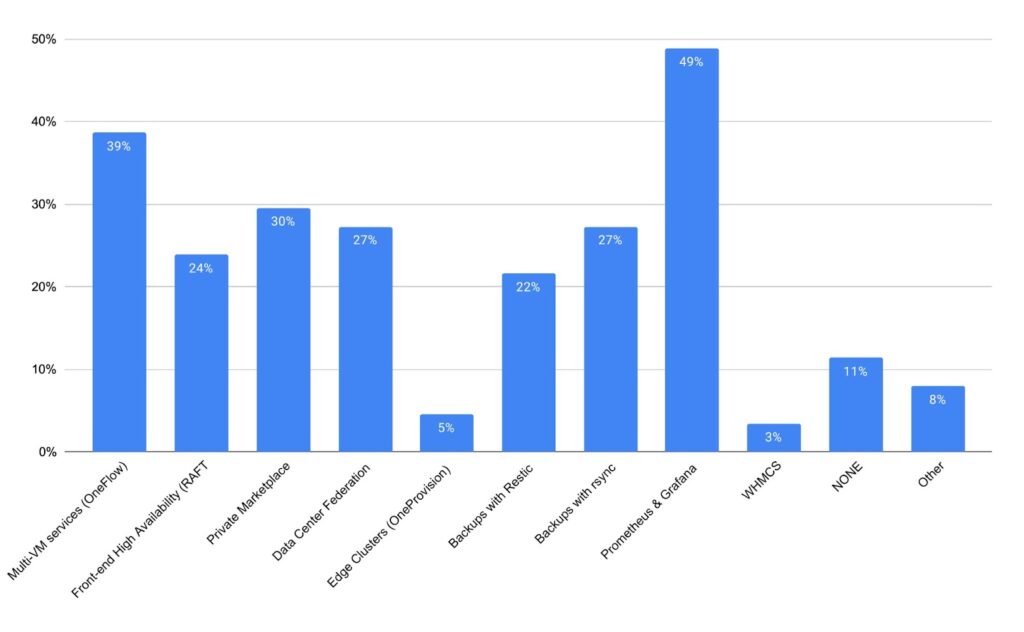
API Usage (allows for multiple selections)
From the API side of the house, things remain pretty steady, with Python bindings being the most popular.
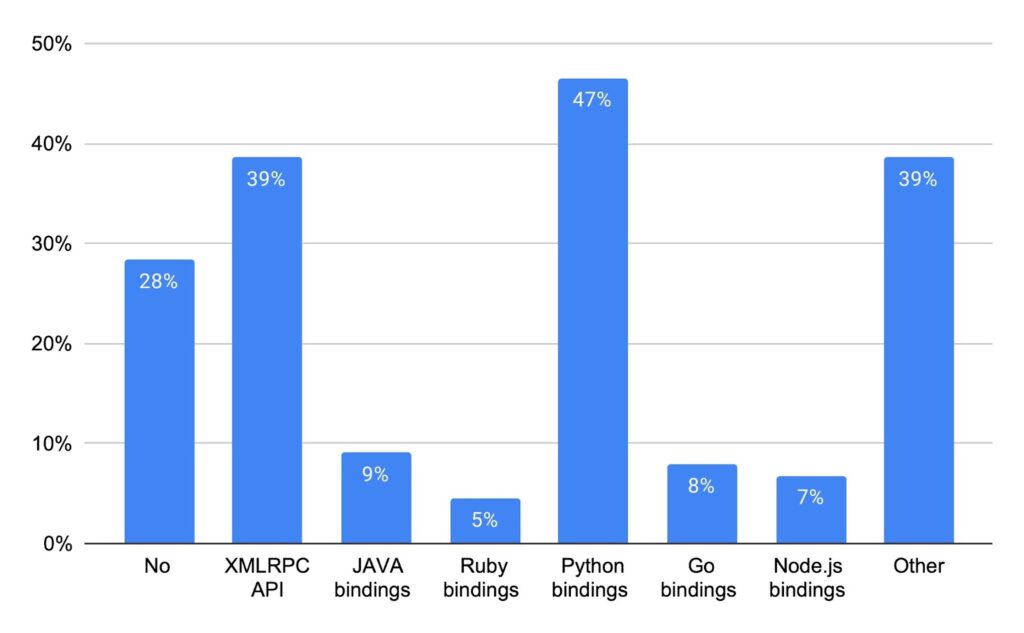
Once again, we thank all of those who have participated in this survey! As we always try to reiterate, your collaboration feeds us with insight and helps to keep OpenNebula in line with your evolving needs, so keep an eye on future versions of OpenNebula! 🚀

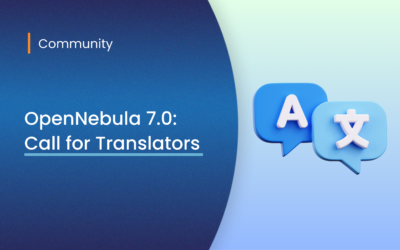

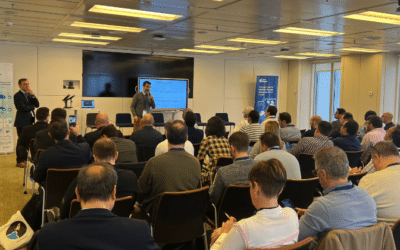
0 Comments